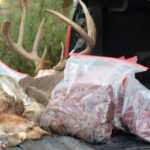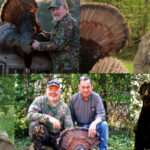Most people can’t put a face with the name of people who die in hunting accidents.
Other than reporting that someone died from a gunshot or treestand fall, most news accounts give little more than a name, age, date, hometown, and where they were hunting. Maybe that’s because hunting fatalities — much like drownings, ATV and snowmobile crashes, or heart attacks in the deer woods — aren’t fluke occurrences.
But it’s easy to make profound loss more personal. Just type the person’s name and their cause of death into your computer or smartphone’s search app. Try this one from Nov. 3 in Wisconsin’s Waupaca County: Ryan Giefer, bowhunter, treestand accident.
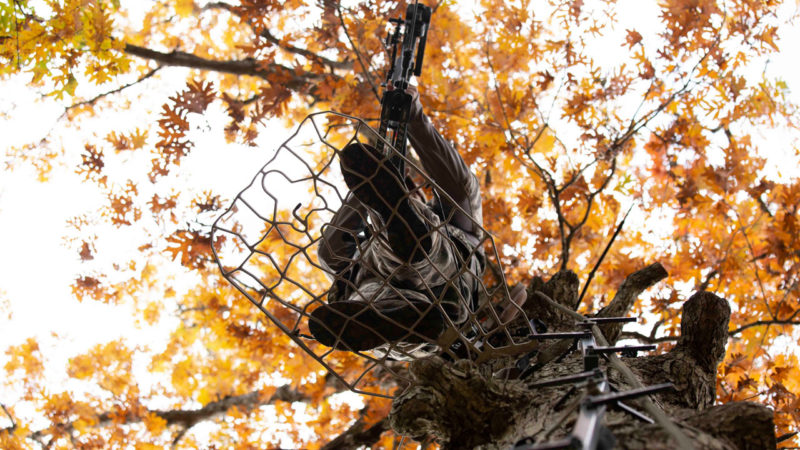
With little trouble you’ll find a family portrait showing Giefer, 32, with his young family the day before he died in a treestand fall. The poignant photo shows Giefer with his wife, Rachel, and their children: Harper, 5; Griffin, 2; and Millie, 3 weeks.
Friends set up a GoFundMe page to help his grief-stricken family. The Giefers live in Waupaca, and he was Wisconsin Rapids’ wastewater superintendent. The lifelong hunter also loved coaching, playing, and umpiring softball.
An incident report filed by the Waupaca County Sheriff’s Department said searchers from the small town’s fire department found Giefer on a friend’s property nearby after his wife reported him missing about 9:30 p.m. on Nov. 3.
An hour later, searchers found him face down with severe head injuries beneath his treestand 20 to 25 feet above. He apparently fell from the stand’s platform, because his bow and camo backpack were hanging on the tree just above it.
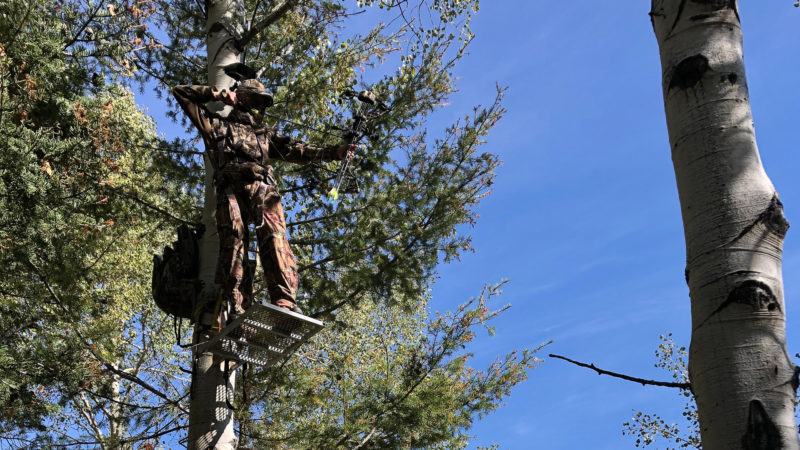
Sheriff’s officers said a nearby trail camera snapped photos of Giefer walking toward the treestand at 3:51 p.m. Hunting hours that day ended around 5:42 p.m. Based on the sheriff’s incident report and a follow-up interview, it’s unknown when Giefer fell during those 111 minutes, and whether he was wearing a fall-restraint harness.
All that’s certain about the tragedy is that Geifer’s gone, and a good, hardworking young man left behind a devastated widow, three beautiful kids, grieving family and friends, and endless hopes and dreams of a future never lived.
Unfortunately, heart-wrenching thoughts and photos are about all we’ll ever know about most fatal treestand accidents in any state. Unlike hunting’s shooting fatalities, most states don’t require their wildlife agency’s law-enforcement bureau to formally investigate treestand fatalities. That job falls to police officers or sheriff’s deputies, even though most aren’t trained to investigate the nuances of such tragedies.
This legal glitch is a remnant of bygone eras when shooting incidents were hunting’s biggest risk. But once deer hunters started standing on tree limbs in the early 1970s, and then started hanging or nailing small platforms into tree trunks in the late 1970s, bone- and neck-breaking falls soon outnumbered crippling and killing gunshots.
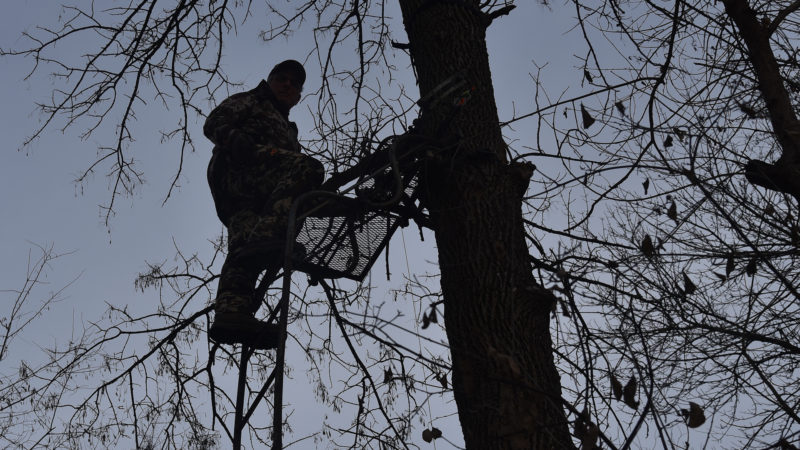
A 2010 study, for example, reviewed the cases of 150 hunters treated at central Ohio trauma centers from 1998 to 2007. It found 46% of their injuries occurred in falls from elevated stands, compared to 29% related to gunshot wounds. Further, a study released in September 2021 by the Henry Ford Health System in Michigan found that hunters are nearly three times more likely to be injured in a treestand fall (4.59 per 10,000 hunters) than with a firearm (1.66 per 10,000 hunters).
In addition, researchers from the Wisconsin Department of Natural Resources and Marshfield Clinic Research Foundation reviewed medical records from 2009 to 2013 in north-central Wisconsin on treestand risks. Deer hunters in that area numbered from 16,556 to 16,902 annually, of which 39 (92% male) were hurt bad enough in falls to require medical care. Most injuries (23) affected the legs and feet, but two were fatalities and one caused paralysis.
To read those reports, click http://dnr.wi.gov/topic/Hunt/documents/WSBRiskProbabilities.pdf and https://www.ncbi.nlm.nih.gov/pubmed/26443558.
It’s iffy to project regional numbers statewide, given varying terrains, cover types, hunter densities and weather conditions. But if those numbers were applied statewide to Wisconsin’s roughly 750,000 gun, bow and crossbow deer hunters, doctors would annually treat 300 to 500 people for falls from treestands or other elevated devices, and coroners would handle nine to 15 fatalities.
Those projections are likely high, however, much like an oft-quoted national study that estimates 300 to 500 treestand deaths annually. Such wide-ranging estimates underscore the fact no one knows how many deer hunters die each year in treestand falls. For perspective, when Pennsylvania researchers studied Consumer Product Safety Commission data from 2005 through 2007, they found 41 deaths nationwide for these falls, or about 14 annually.
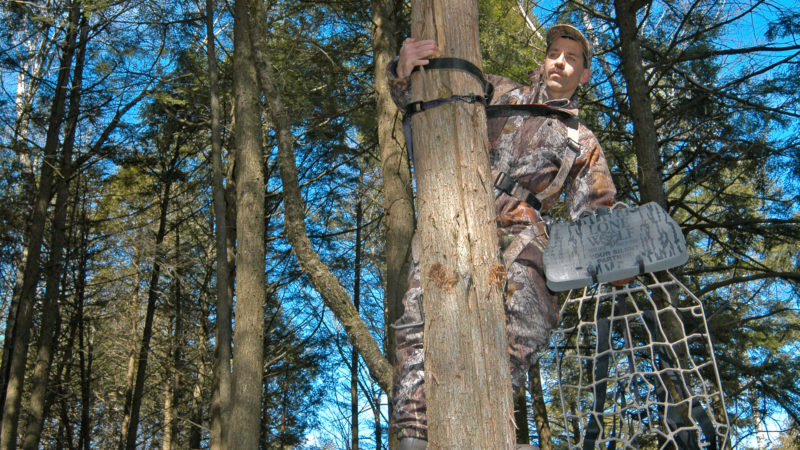
The Wisconsin DNR, for example, doesn’t investigate how treestand fatalities happen, and Wisconsin hospitals aren’t required to document the injuries in a formal report. In contrast, the DNR by law investigates, and hospitals document, every shooting incident. Those data reveal that Wisconsin averaged 0.75 gunshot deaths annually during the past decade’s deer seasons.
Tim Lawhern spent over 30 years with the Wisconsin DNR as a conservation warden and special investigator. He estimates Wisconsin loses at least one deer hunter annually in treestand falls. “If it’s not a fatality, it’s a maiming that leaves someone a quadriplegic,” Lawhern said. “But that’s the best I can do. The actual numbers aren’t logged into annual data programs and compared state by state. I’m not aware of any mandatory state or national reporting system for treestand incidents.”
Meanwhile, many state agencies, universities, hunting organizations, and regional hospitals or medical centers learn what they can about these accidents. That’s why we know most falls occur while hunters climb, step in, step out or descend from treestands, especially when it’s dark at day’s end. The DNR/Marshfield study found ascents and descents account for 55% of falls, while 20% occurred from the stand’s platform, 20% occurred while attaching the stand to a tree, and 6% occurred during tasks like trimming branches or attaching safety straps.
Studies also tell us that most falls are 16 to 17 feet, and hunters are traveling 30 mph when they hit the ground. Further, alcohol is seldom involved, with most studies identifying it in 2% to 6% of the cases.
And make no mistake: Deer hunters love elevated stands. Roughly 84% of Wisconsin gun-hunters and 91% of its bowhunters go aloft. Unfortunately, only 33% of bowhunters and 23% of gun-hunters report always wearing a “safety harness or fall restraint” when in a treestand. Further, 33% never use a harness even though 67% own one.
Here’s an idea: If state lawmakers and conservation commissioners want to do something good for hunting, they should work together to require their states investigate — and hospitals document — all treestand fatalities. The information learned might just save lives in the future.

 By
By 
